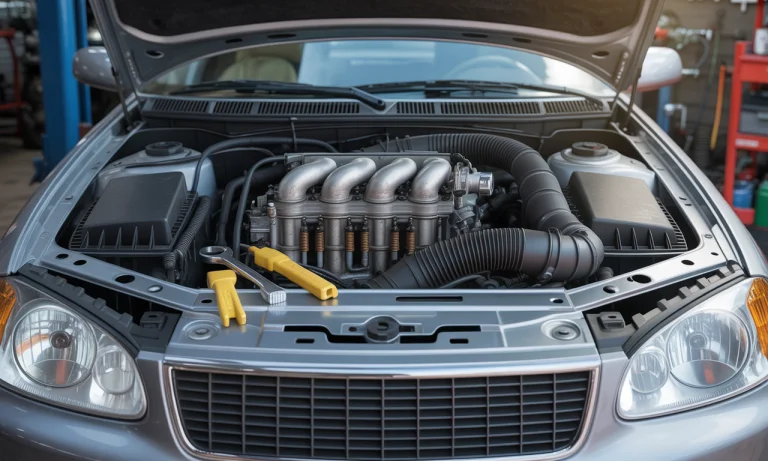There’s nothing quite like the sinking feeling that accompanies a car stalling at the worst possible moment—on your way to an important meeting, perhaps, or in the middle of a long-anticipated road trip. For millions of drivers, engine failure is more than an inconvenience; it’s a financial blow and a logistical headache. Behind the scenes, a complex blend of mechanical wear, missed maintenance, and sometimes just bad luck quietly builds until something critical gives way. Whether it’s a sudden spark plug failure or a nagging oil leakage left unchecked, the path to engine failure is often paved with small warnings. In 2025, as vehicles grow smarter and more connected, understanding these hidden threats takes center stage for anyone hoping to get the most out of their car—regardless of age, make, or mileage.
Understanding the Anatomy of Car Engine Failure: Root Causes and Modern Risks
Every car has a story, and for Ethan—a rideshare driver juggling long hours across city highways—the ominous rattle under the hood signaled a chapter of trouble. His regular maintenance routine had slipped, opening the door to a cascade of minor oversights that accumulated into a far larger crisis. Overheating stood out as an early sign, but it was soon joined by oil leakage and eventually a sudden timing belt breakage. These failures are rarely isolated. Modern engines, bristling with electronics, react dramatically to minor anomalies, such as bad sensors or a battery issue, that might go unnoticed until the car refuses to start.
At the heart of these failures are a handful of critical issues: overheating, faulty timing belts, coolant loss, spark plug failures, and lurking fuel pump malfunctions. For drivers like Ethan, the warning signs—a slipping belt, sluggish start, or rising temperature gauge—blend into the daily grind unless caught early. When routine maintenance falls behind, the engine becomes vulnerable, risking not just operational setbacks but extensive repairs. Get to know the essential basics of car engines to better decipher these early signs and safeguard your ride for the long haul.
The Chain Reaction: How Overheating and Oil Leakage Set Off an Engine Breakdown
Picture a mid-July day in Houston, a congested freeway, and Lila’s compact sedan, steam swirling from the hood. Like countless others, Lila underestimated the catastrophic domino effect of overheating. A modest coolant loss—barely a cup—quickly escalated as the temperature soared, warping her cylinder head. This warped metal, in turn, led to oil leakage and eventually the monumental expense of head gasket failure.
These stories echo across workshops nationwide: oil leakage starves crucial components of lubrication, increasing friction, while coolant loss propels the engine into risky high-temperature territory. The secret to longevity? Vigilance: checking fluid levels before major trips, especially in the blistering heat, and heeding even minor leaks. For peace of mind on cross-country journeys, review these tips to prepare your car for long road trips, ensuring small issues don’t turn into stranded emergencies.
Fuel System Dangers and Ignition Traps: From Bad Sensors to Spark Plug Failures
Modern engines dance on the edge of precision—timing, fuel mixture, ignition—all orchestrated by a chorus of sensors and delicate parts. In Theo’s case, a misfire during a heavy rainstorm pointed to a spark plug failure, worsened by an unnoticed fuel pump malfunction. Bad sensors played tricks, sending faulty signals to the car’s computer. Each error, seemingly harmless, added stress to the system.
Electrical malfunctions further complicate the story. A weak battery on a chilly morning can be the culprit behind persistent ignition issues, sending drivers in circles chasing phantom problems. The complicated choreography between sensor data and hardware places extra emphasis on quality components—cutting corners on fuel filters or spark plugs is a shortcut to trouble. It’s why investing upfront in reliable parts pays dividends down the road. Need to save on repairs without sacrificing safety? These money-saving repair tips empower car owners to make smart spending decisions.
Mechanical Missteps: Timing Belts, Worn Piston Rings, and Beyond
Few moments match the gut-punch of a sudden engine stall—especially when it’s the result of a snapped timing belt. For owner-drivers like Jasmine, who clocked 90,000 miles without a replacement, the sound of metal grinding to a halt came as a costly lesson. The domino effect doesn’t end there: worn piston rings creep up with subtle symptoms—smoke on startup, sluggish acceleration—before compounding into critical issues like oil leakage and compression loss.
Failure rates soar when recommended replacement intervals are ignored, while head gasket failure—often caused by prior overheating—can push repair bills beyond the value of the car itself. Proactive engine care, such as replacing timing belts ahead of schedule and inspecting for piston ring wear, is essential insurance. If reliability is your top priority, learn how Subaru now tops the charts in engine reliability and what it means for your long-term costs.
Statistics and Stories: What the Numbers Reveal about Engine Failure Risks
Data tells its own story—and in the world of engine failures, the patterns are as revealing as any personal anecdote. According to industry analyses, approximately 30% of incidents originate from oil-related failures, while cooling system lapses drive about a quarter of cases. Fuel system complications and ignition blunders fill in the gaps. Surprising but true: head gasket failure makes up a significant chunk of catastrophic repairs, often linked back to either overheating or neglected oil leaks.
| Cause of Engine Failure | Estimated Impact (%) | Warning Signs |
|---|---|---|
| Overheating | 25% | Rising temperature gauge, steam from hood |
| Oil leakage | 30% | Oily residue, low oil level, engine knocks |
| Timing belt breakage | 10% | Ticking noise, engine misfires, sudden stop |
| Coolant loss | 20% | Frequent top-ups, wet spots under car |
| Spark plug failure | 6% | Difficulty starting, rough idle |
| Fuel pump malfunction | 4% | Loss of power under load, stalling |
| Bad sensors | 3% | Engine warning lights, erratic performance |
| Worn piston rings | 1% | Blue smoke, oil consumption |
| Head gasket failure | 1% | Milky oil, coolant loss, overheating |
| Battery issues | Up to 5% | Clicking noise, dim lights, electrical faults |
For owners considering the leap to modern technology, electric vehicles introduce new reliability discussions. Their engines may not face oil changes, but battery issues and electronic sensor malfunctions present fresh challenges. Dig into the hidden costs of electric car maintenance to see how the future is already reshaping the landscape of engine care.
Preventive Maintenance: Habits That Save Engines and Wallets
Amelia, a meticulous driver with over 250,000 miles on her hatchback, swears by one regimen: never missing a checkup. Her secret weapon is an unwavering schedule of oil changes, coolant flushes, and periodic battery replacements—small acts that sidestep major pitfalls. Every trip begins with a glance at fluid levels and a quick listen for odd noises. She credits this discipline for her engine’s longevity, echoing the advice of seasoned mechanics across the globe.
| Factor | Best Practice | Red Flag |
|---|---|---|
| Oil Changes | Every 5,000 miles | Skipped intervals, thick or dark oil |
| Spark Plugs | Replace at 40,000 miles | Engine misfires, poor fuel economy |
| Coolant | Flush every 2 years | Discolored or low coolant |
| Timing Belt | Inspect at 60,000 miles | Ticking noise, visible wear |
| Fuel System | Use quality fuel, change filters regularly | Engine hesitation, noisy pump |
| Battery | Test yearly, replace at 4-5 years | Slow cranking, dashboard lights flicker |
Regular preventive care isn’t just about peace of mind—it’s about cost avoidance and reliability, especially with the rise of autonomous vehicles poised to reshape driving norms. Developing these habits now prepares drivers for any evolution the industry has in store.
FAQ on the Common Causes of Car Engine Failure
What are the first symptoms of engine overheating, and can I prevent serious damage?
The first signs include a rising temperature gauge, steam from under the hood, and sometimes a warning light. Pull over immediately and let the engine cool down. Check coolant levels and inspect for possible leaks. Prevent major damage by maintaining coolant system health and responding quickly to temperature spikes.
How does oil leakage lead to engine failure?
Oil leakage reduces the quantity of lubricant reaching vital engine parts. This increases friction and wear, leading to overheating, component damage, and possible engine seizure. Regularly check for oil stains under your vehicle or drops in oil level on the dipstick.
Is it safe to drive with a check engine light caused by a spark plug failure or bad sensor?
While you might be able to drive short distances, continuing to drive with a check engine light can cause compounded problems—especially if it stems from spark plug failure or faulty sensors. It’s best to diagnose and repair the issue promptly to avoid further damage.
What maintenance can extend my engine’s life and prevent timing belt breakage?
Adhere strictly to the recommended timing belt replacement intervals (often between 60,000–100,000 miles), even if the belt looks fine. Routine inspections, using quality replacement parts, and timely coolant and oil changes all work together to extend engine life.
Are battery issues a common cause of engine failure in electric and hybrid cars?
Yes, as vehicles rely more heavily on electronic systems, battery health becomes critical. Failing batteries can prevent the car from starting or disrupt key electronics, leading to performance losses or total immobilization. Annual battery checks and timely replacements are essential. For a deeper dive, explore electric car battery maintenance and its impact on reliability.
Did you like it? 4.5/5 (26)






